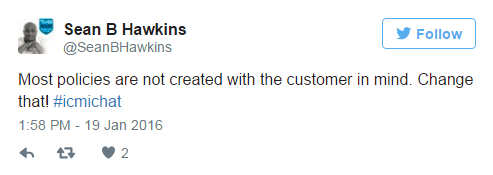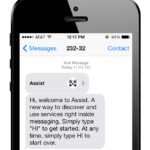
post
January 26, 2016
5 Lessons Learned from Customer Service Failures
This guest post is written by Erica Strother Marois, the Community Specialist at ICMI.
We’ve all been on the receiving end of poor customer service. Long wait times, annoying IVRs, unforgiving return policies, and a lack of channel options can all be maddening. And inevitably, these frustrations spill over to the front line employees. Customer service is more complex and stressful than ever, and ICMI research indicates that the industry is only growing more complicated.
What can customer service leaders do to alleviate stress and improve the customer experience? To answer that, we turn to some of the most infamous customer service failures in recent history. (After all, some of the best insight comes from the biggest failures).
Here are five lessons learned from headline-grabbing customer service failures:
1. Sometimes customers are wrong. Make it easier for them to be right.
“The customer is always right.” It’s a quote that business professionals have recited for years, but is the customer always right? Or is the customer ever to blame for poor service?
Remember the Maine Diner that kicked a customer out of her restaurant last summer? The customer’s child was disruptive, so she asked them to leave. Who was right? Plenty of people actually sided with the owner.
And remember this controversial Huffington Post article from 2013?
Honestly, the customer isn’t always right. But it’s our job to treat them like they are. And even more importantly, it’s our job to make it easier for them to be right.

Are your customers calling the wrong line for service? Perhaps your customers are angry about late fees imposed on their account? Think about what you could do to prevent the situation from ever taking place. Could you improve your website? Could you send text reminders to let your customers know their bill due date is approaching? In the case of that Maine diner—should the owner offer snacks and coloring books for young children? Perhaps a kid-friendly seating section?
Sure—customers are wrong sometimes, but that shouldn’t change their experience, or your company’s approach to service.
2. Taking ownership doesn’t mean taking blame.
It’s human nature to be defensive. No one enjoys being wrong. Unfortunately, defensiveness doesn’t solve problems. When it comes to customer interactions, it’s essential to take ownership when situations don’t go as planned. This doesn’t always mean falling on the sword and taking all the blame, it means taking responsibility for making the situation right. It also means listening—really listening—to your customers and looking for the lesson in their feedback. Help your customers regain confidence in your company by taking control of the situation, making it right, and preventing future problems.
View feedback as a gift, not a burden. Don’t discourage your customers from sharing how they feel, or offering their tips for improvement. And certainly never approach customer feedback the way this hotel did.
3. Customer service is a tough job.
Remember the fast food employee who in a fit of frustration shot a customer? Thankfully the customer was okay, but how did the situation escalate to that point?
Dealing with angry customers isn’t pleasant or easy. And while it’s never acceptable for an agent or employee to behave unprofessionally, it’s important to acknowledge the challenging nature of customer interactions. It’s impossible to prevent a problem if you don’t admit it exists. Show your employees that you know how tough their job is, and take steps to alleviate some of the stress.

Offer on-site yoga classes. Dedicate a room for quiet meditation. Give your agents stress balls, or adult coloring books for breaks.
More importantly, arm your employees with the training and tools needed to tackle difficult situations. Consider difficult customer interactions as learning moments. Bring recordings or transcripts of heated exchanges to group training sessions, and ask team members how they’d respond in a similar situation. Role play. Help agents prepare for the worst, and they’ll feel more comfortable and confident when a difficult call comes their way.
4. Don’t forget the human touch.
An expectation of 24/7 service, in a customer’s language and channel of choice is no longer uncommon. To meet these rising expectations, many companies have relied on automation to close the gap. While there are certainly instances when automation can be effective, remember that customer service is still a people business. Forgetting the human touch causes your company to feel unauthentic, and that can lead to less loyal customers. This is especially true in service channels such as social media that are supposed to be (you guessed it) social.
Case in point: a few months ago, a well-known telecommunications provider crashed ICMI’s weekly Twitter chat. Awesome, right? Encouraging to witness a respected brand listening to their customers on social media, huh? Not exactly. It quickly became glaringly obvious that we were dealing with bots—and not the intelligent type. You can read more about the entire exchange by checking out this blog post by Jeff Toister. Spoiler alert: this company has become a running joke in the #ICMIchat community, and serves as a prime example of how not to handle automated customer service.
5. Give your agents the freedom to make things right.
Just like scripts, policies can be used as a helpful guide for serving customers. Setting expectations makes the experience more positive for both customers and agents. But remember there are times when every rule must be broken. Rigid policies can often make an employee’s job even harder, so it’s critical to empower your employees. Give them the freedom to exercise common sense and bend the rules when needed.
For example, imagine you work in a hotel. A distressed (and naked) customer shows up at the front desk. He’s been locked out of his room and needs help getting back in. You ask for his ID, but it’s in his room (which he’s locked out of). According to hotel policy, you’re only allowed to issue a new key to customers who are able to show photo identification. How would you handle this situation? This happened several months ago, and due to the strict hotel policy the employee wasn’t able to help the guest in the best way possible.
Rules and guidelines are valuable, yes. But teaching your employees how to determine when to break the rules is even more valuable. Don’t let policies leave your customers feeling like a number instead of a valued guest.

Has your business learned any lessons from customer service gone wrong? Have you as a customer been on the receiving end of a customer service hall of shame moment? Share your experiences in the comments below! Let’s all remember to embrace the insight that comes from service failures!
About the Author
Erica Strother Marois is the Community Specialist at ICMI. In her role at ICMI she hosts and plans the weekly #ICMIchat twitter chat, manages a robust network of contact center writers and speakers, and produces the weekly Contact Center Insider Newsletter. Erica is a connecter of people, and loves being a part of the contact center community.
Connect with Erica: Twitter: @ens0204 | LinkedIn: https://linkd.in/16kW2cj | Google+: https://bit.ly/1zkp9YS | Email: estrother@icmi.com
Image of boy facepalm by mintchipdesigns. CC0 license. Edited.
Stay up to date
Latest Articles




